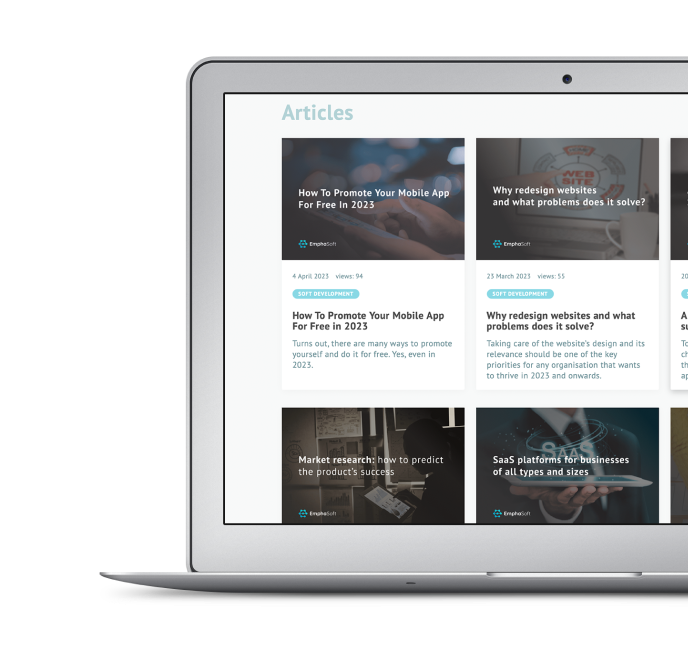In today’s digital landscape, inclusivity and accessibility are not optional—they're essential. Designing products that everyone can use, including people with disabilities, isn't just about meeting legal requirements. It’s about creating a better, more equitable digital experience for all. And when accessibility is integrated from the start of the product design process, the results are not only more inclusive but also more user-friendly and efficient.
Why Accessibility Matters
More than 1 billion people worldwide live with some form of disability, according to the World Health Organization. This includes a range of impairments—visual, auditory, motor, or cognitive—that can affect how people interact with digital products. For businesses, ensuring accessibility means creating experiences that are usable by all, regardless of ability.
Accessible design isn’t just about legal compliance with regulations like the Web Content Accessibility Guidelines (WCAG) or the Americans with Disabilities Act (ADA). It’s also good business. Accessible products open the door to a wider audience, increase customer satisfaction, and improve SEO. More importantly, they demonstrate a commitment to inclusivity and diversity.
Core Principles of Accessible Design
Designing for accessibility means focusing on several key principles:
- Perceivable: Users should be able to perceive the content regardless of how they access it—whether by sight, sound, or touch. This includes using alternative text for images and providing transcripts for videos.
- Operable: Your interface should be navigable using various tools, including keyboards and assistive devices like screen readers. Interactive elements must be easily accessible.
- Understandable: Your product’s information and design should be clear and intuitive. Users should be able to navigate and understand content without confusion or excessive effort.
- Robust: Ensure your product works seamlessly with assistive technologies. This includes designing in a way that anticipates changes in technology while maintaining functionality.
Integrating Accessibility from Day One
The best way to ensure your product is accessible is to integrate accessibility principles from the start. Retrofitting accessibility after the fact is costly and often less effective. Here’s how to do it right from the beginning:
1. Research Diverse User Needs
Before starting the design process, make sure to gather input from a wide variety of users, including those with disabilities. This helps identify the specific challenges these users face and allows you to build a more inclusive design from the outset.
2. Use Accessible Design Tools
There are plenty of tools available to help you implement accessible design. Color contrast checkers, for example, ensure your text is legible for visually impaired users. Accessible UI kits provide frameworks that adhere to accessibility standards, speeding up the process of building inclusive interfaces.
3. Design for Multiple Navigation Methods
Many users rely on keyboards or voice commands to navigate digital interfaces. Ensure your product is fully operable through these methods by including appropriate focus indicators, clear labels for buttons, and logical tab orders.
4. Test with Assistive Technologies
Don’t just rely on automated tools to test for accessibility—use real assistive technology and get feedback from users who rely on it. This will reveal usability issues that might not be caught through automated testing alone.
5. Make Accessibility Part of Your Development Workflow
Accessibility shouldn’t be an afterthought in the development process. Set specific accessibility goals for each sprint and ensure your team prioritizes them alongside other product features. Continuously refine and test your product to ensure it remains accessible as it evolves.
How Emphasoft Supports Accessible Design
At Emphasoft, we recognize the importance of building digital products that are accessible and inclusive. Our approach to product development ensures that accessibility is baked into the process from the very beginning.
Here’s how we help businesses create accessible digital experiences:
- Compliance Expertise: Our team is well-versed in WCAG 2.1, ADA, and other accessibility guidelines. We guide clients through the complex world of accessibility compliance, ensuring that their products meet all necessary standards.
- Custom Solutions: Emphasoft specializes in custom development for assistive technology integrations, making it easier for users with disabilities to interact with your product.
- Inclusive User Testing: We involve real users with disabilities in our testing processes to ensure the product is truly usable by everyone, offering practical insights and actionable feedback.
- Accessibility-Centered Design: Our design teams create beautiful, functional interfaces that are also fully accessible. We use accessible color palettes, ensure responsive navigation, and prioritize content clarity.
- Continuous Improvement: Accessibility is not a one-time effort. We provide ongoing support to help our clients maintain and improve accessibility features as their product grows and technology advances.
The Business Case for Accessibility
Building accessible digital products offers far-reaching benefits beyond inclusivity:
- Expanded Audience: By making your product accessible, you open it up to a wider user base, including millions of people with disabilities.
- Better SEO: Many accessibility improvements, such as adding alt text to images, also benefit your SEO efforts.
- Improved User Experience: Accessibility features like clear navigation, intuitive design, and easy-to-read content improve the experience for all users, not just those with disabilities.
- Cost-Effectiveness: Designing for accessibility from the start avoids the costly need for retroactive fixes and ensures smoother development.
Final Thoughts
Creating accessible digital products isn’t just a box to check—it’s a key element of good design. It ensures that your product can be used by all, enhances the overall user experience, and aligns with your business’s values of inclusivity and diversity.
By integrating accessibility into the earliest stages of design and development, you set your product up for long-term success. With Emphasoft’s expertise, your product will not only meet accessibility standards but will also offer an exceptional user experience for everyone.
Read next:
Speed Up Your Product Launch: The Practical Benefits of CTO-as-a-Service
From MVP to Full Product: How Not to Break Everything While Scaling Your Startup








